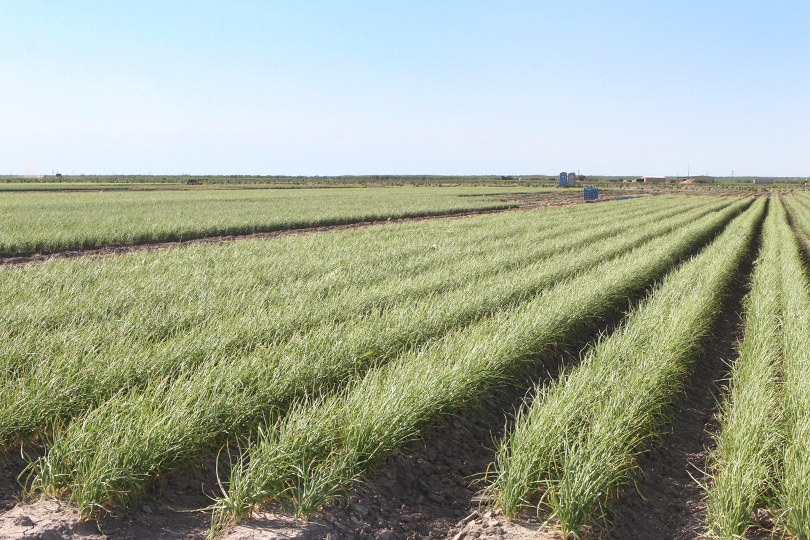By Emmy Powell
Communications Specialist
The lack of water in the Rio Grande Valley is an issue for farmers like Mike Helle.
He grows watermelons, honeydew melons, onions, corn and peas in Hildalgo County.
But it’s a tough year with a limited amount of irrigation water available to grow his crops.
Helle farms north of Edinburgh, which he said is in better shape compared to the Lower Rio Grande Valley.
“I’m one of the fortunate ones where I live here north of McAllen and north of Edinburgh. In this particular spot, that’s where I had my onions and my watermelons because I had at least a year supply of water,” Helle said.
He also farms on land northeast of Edinburgh in Hargill, too. On that farm, Helle planted crops that need less water.
“I planted peas out there because they use less water, and we are going to just try to limp through that and make a crop of peas,” he said. “And then north of me, it’s another irrigation district, but it’s in the same situation. There’s more farmland than homes. It’s not five miles north of me, but I’ve got 200 acres of land that I can only put 40 acres of watermelons on because that’s all the water I have to produce irrigated.”
Helle chooses crops he can grow based on the water available to him, but the outlook isn’t good for the region, which is facing consecutive years of drought and lack of irrigation water that is supposed to be supplied from Mexico.
“We’re gambling on that to pull through. If we have a little bit of rain, they should be fine. But the citrus guys down here, they’re in rough shape,” Helle told the Texas Farm Bureau Radio Network.
The impacts of the lack of water in the Lower Rio Grande Valley are already being felt by farmers. Texas’ only sugar mill closed earlier this year due to the lack of water and ongoing issues with Mexico under the 1944 Water Treaty.
Helle said the water situation is important to be aware of and will only get worse from here.
“Farmers do what we can to conserve water, and we need help from people in town,” he said. “I hope that the cities are starting to pay attention. Maybe water the yards a little less since we’re down to 20% capacity at the lakes. If you get rain, turn sprinklers off.”


Leave A Comment